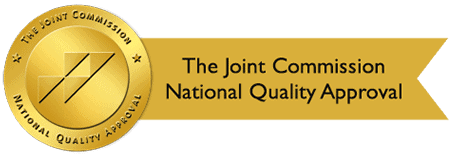By: Design for Change Recovery
Categories:
The Cost of Getting High: Who Pays the Highest Price?
You are here:Have you ever wondered about the cost of addiction to society? You may find the cost of getting high is far more substantial than you imagined. Unfortunately, drug users are not the only ones forking out large amounts of money as a result of their addiction. The government and taxpayers spend staggering sums to combat drug-related issues such as crime, addiction treatment, incarcerations, and more.
Taking a closer look at the numbers can be eye-opening. So, to help you get a true perspective on the real costs of substance use in America here is a breakdown of where the money goes.
Society’s Contribution to Covering the Cost of Addiction
As a society, we are responsible for covering the costs of getting high. You may be surprised to know that, since 1971, the total cost of substance use in America is around $1 trillion every year. Where does the money go? Let’s take a look.
A few examples of how tax money is used to pay for drug-related issues each year:
| Lost productivity in the workplace: | $437 billion |
| Drug-related health care: | $166 billion |
| Incarcerations: | $182 billion |
| Drug-related crime and accidents: | $ 97 billion |
| Law enforcement in the war on drugs: | $ 41 billion |
| Treatment for substance use disorders: | $ 30 billion |
Clearly, the financial burden of substance use in our nation is significant.
Number of Arrests by Drug Type

The majority of arrests for drug law violations are for personal possession. Last year, the arrests by drug type were as follows:
- Marijuana – 350,149 arrests
- Heroin or cocaine – 371,008 arrests
- Synthetic drugs – 57,780
- Non-narcotic drugs – 473,800
Currently, more than 2.3 million people are incarcerated for drug offenses.
How Much Do People Spend to Get High?
Each minute across America, people spend more than $525,000 on their drugs of choice. That translates to $31.5 million per hour, $756 million daily, and $276 billion per year. Here’s a breakdown by drug type of where their money goes:
Legal drugs: $140 billion per year:
- $67 billion on alcohol
- $73 billion on nicotine
Illegal drugs and non-medical prescription drugs: $130 billion per year:
- $48 billion on painkillers
- $33 billion on marijuana
- $20 billion on meth
- $17 billion on cocaine
- $12 billion on tranquilizers, sedatives
- $6 billion on heroin
If we combine the cost of getting high with the cost of dealing with the consequences, a lot of money is wasted. Of course, the real costs of substance use is revealed in the shocking number of lives lost to accidental overdoses. In the U.S. alone, 107,600 people died from an overdose in 2021.
Scope of Substance Use In the U.S. Today
Substance use disorders (SUDs) are far more widespread than most people realize. You might be shocked to learn that more than 22 million people currently struggle with active SUDs. As a result, the number of people directly impacted by SUDs is approximately 45 million.
Unfortunately, the United States ranks number one on the list of countries with the highest share of people with SUDs. According to data from the World Health Organization, 5.89 percent of Americans have a substance use disorder.
The good news is that more than 23 million people are in addiction recovery.
Professional Treatment Helps Reduce the Cost of Addiction
Many people who misuse or inappropriate use drugs falsely believe they are not harming anyone but themselves. In truth, the impacts of their substance use extend to affect family, friends, employers, and society as a whole.
Professional addiction treatment is the best option for bringing down the rates of addiction, overdoses, and the consequent cost of addiction to society. According to the Surgeon General,
“It is time to change how we as a society address alcohol and drug misuse and substance use disorders. The goals of substance use disorder treatment are very similar to the treatment goals for other chronic illnesses: to eliminate or reduce the primary symptoms (substance use), improve general health and function, and increase the motivation and skills of patients and their families to manage threats of relapse. ”
At Design for Change Recovery, we focus on healing the whole person mentally, physically, and emotionally for lasting change. Our evidence-based program can be customized to fit the unique needs of each client.
We offer a comprehensive program that includes CBT, holistic therapies, group and individual counseling, detox, music and art therapy, family therapy, and more.
If you would like to know more about our programs, reach out to us at Design for Change Recovery in Lancaster, CA. One of our representatives will be available to answer your questions and discuss your treatment options.
Sources:
- npr.org/ – Overdose Deaths Continue to Rise in 2021, Reaching Historic Highs
- cnbc.com/ – America Has Spent Over a Trillion Dollars Fighting the War on Drugs
- obamawhitehouse.archives.gov/ – What America’s Users Spend on Illegal Drugs
- addiction.surgeongeneral.gov/ – Time for a Change


